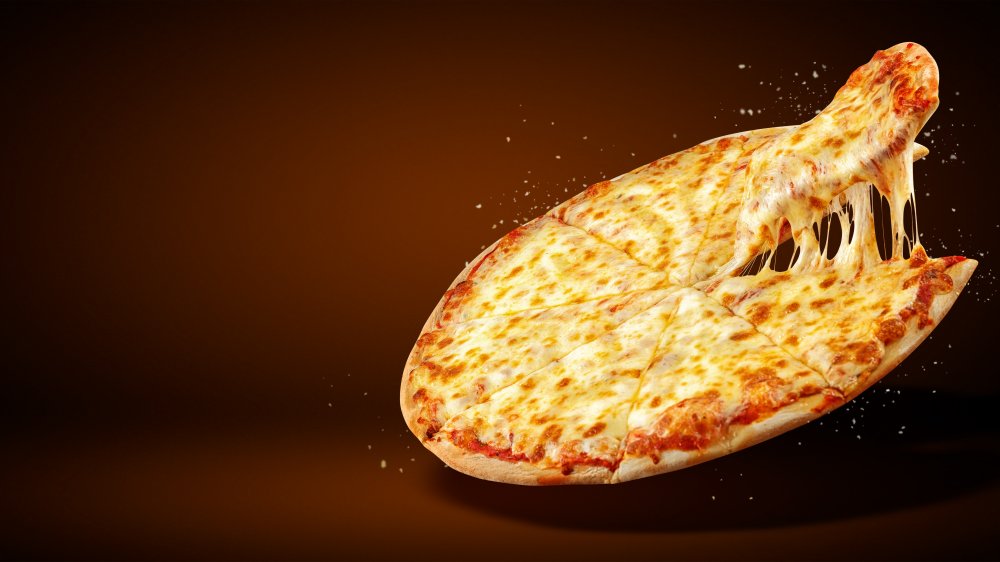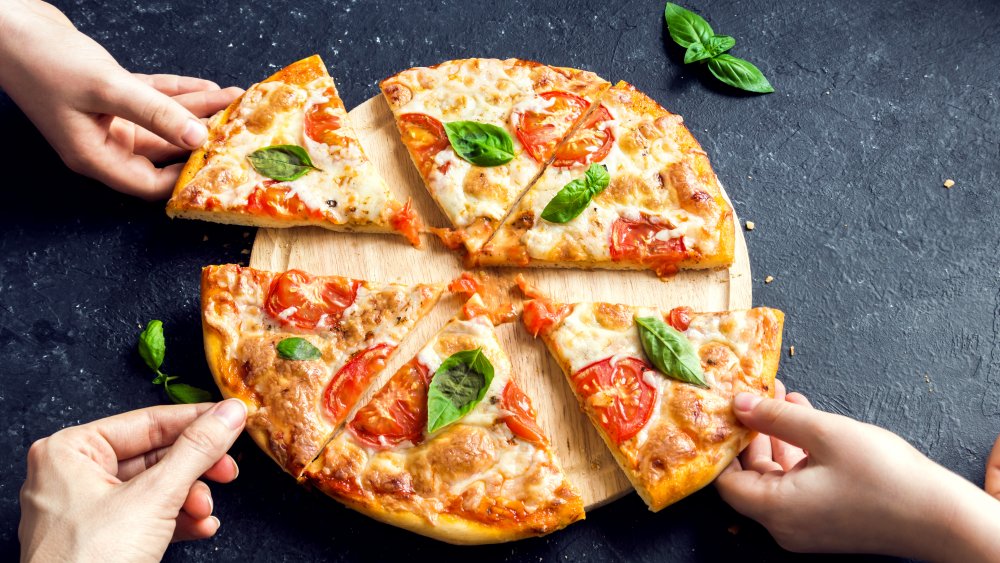The Real Reason Nobody Puts Cheddar Cheese On Pizza
There are few foods out there that hit the spot, no matter where that spot might be. Happy? Celebrate with a pizza. Sad? Drown your sorrows with a pizza. Hungry? Go for a quick pizza.
Thoughtful pizza franchises and pizzeria owners have even found a way to keep address our pizza cravings while we're on gluten-free or dairy-free diets. So it's no wonder that Webstaurant Store says in the U.S. alone, 70,000 pizza shops generate sales revenues of $32 billion a year.
Our love for pizza stems partly from the fact that the dish presents the perfect storm of sweet spots: a crispy crust and tangy tomato sauce, topped with slightly salty, melty, bubbly cheese. And while the meats and veg that we throw on top of a pizza may vary — the cheese we use in the pizza doesn't change.
Science supports using mozzarella instead of cheddar on pizza
The union between pizza and mozzarella may be the result of a happy accident, but the decision is backed by research at the University of Auckland in New Zealand, where a team of food scientists decided to investigate the brown bubbling — or blistering — of pizza cheese. To do this, the team threw different types of grated cheese (mozzarella, cheddar, Colby, Edam, Emmental, gruyere, and provolone) on pizza crusts and then baked them for a specific time under the watchful eyes of strategically placed cameras.
According to BBC, researchers found that in order for types of cheese to become morph into the perfect pizza topping, it needed to have the right elasticity, moisture, and oil so the ingredient could blister and brown the right way. The researchers discovered that cheddar, Colby, and Edam weren't elastic enough to form large bubbles. Gruyere and provolone could form large bubbles but had too much oil to brown. Emmental could only make flat bubbles. And only mozzarella could do the job the way we intend — with cheese perfectly browned, perfectly blistered, and melted in all the right spots.

